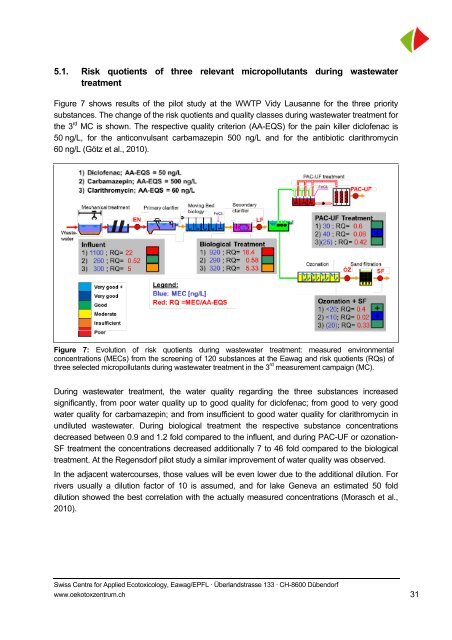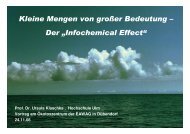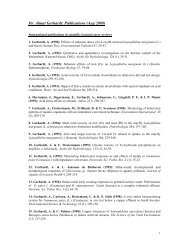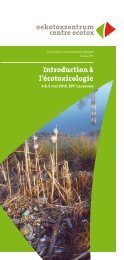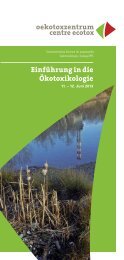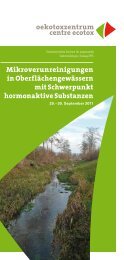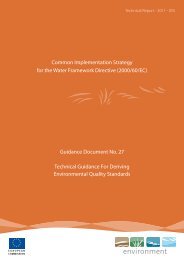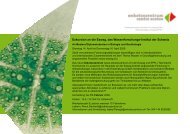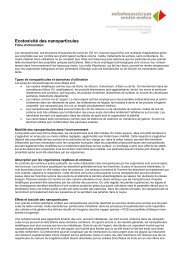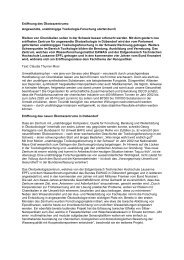Evaluation of Bioassays and Wastewater Quality ... - Oekotoxzentrum
Evaluation of Bioassays and Wastewater Quality ... - Oekotoxzentrum
Evaluation of Bioassays and Wastewater Quality ... - Oekotoxzentrum
You also want an ePaper? Increase the reach of your titles
YUMPU automatically turns print PDFs into web optimized ePapers that Google loves.
5.1. Risk quotients <strong>of</strong> three relevant micropollutants during wastewater<br />
treatment<br />
Figure 7 shows results <strong>of</strong> the pilot study at the WWTP Vidy Lausanne for the three priority<br />
substances. The change <strong>of</strong> the risk quotients <strong>and</strong> quality classes during wastewater treatment for<br />
the 3 rd MC is shown. The respective quality criterion (AA-EQS) for the pain killer dicl<strong>of</strong>enac is<br />
50 ng/L, for the anticonvulsant carbamazepin 500 ng/L <strong>and</strong> for the antibiotic clarithromycin<br />
60 ng/L (Götz et al., 2010).<br />
Figure 7: Evolution <strong>of</strong> risk quotients during wastewater treatment: measured environmental<br />
concentrations (MECs) from the screening <strong>of</strong> 120 substances at the Eawag <strong>and</strong> risk quotients (RQs) <strong>of</strong><br />
three selected micropollutants during wastewater treatment in the 3 rd measurement campaign (MC).<br />
During wastewater treatment, the water quality regarding the three substances increased<br />
significantly, from poor water quality up to good quality for dicl<strong>of</strong>enac; from good to very good<br />
water quality for carbamazepin; <strong>and</strong> from insufficient to good water quality for clarithromycin in<br />
undiluted wastewater. During biological treatment the respective substance concentrations<br />
decreased between 0.9 <strong>and</strong> 1.2 fold compared to the influent, <strong>and</strong> during PAC-UF or ozonation-<br />
SF treatment the concentrations decreased additionally 7 to 46 fold compared to the biological<br />
treatment. At the Regensdorf pilot study a similar improvement <strong>of</strong> water quality was observed.<br />
In the adjacent watercourses, those values will be even lower due to the additional dilution. For<br />
rivers usually a dilution factor <strong>of</strong> 10 is assumed, <strong>and</strong> for lake Geneva an estimated 50 fold<br />
dilution showed the best correlation with the actually measured concentrations (Morasch et al.,<br />
2010).<br />
Swiss Centre for Applied Ecotoxicology, Eawag/EPFL · Überl<strong>and</strong>strasse 133 · CH-8600 Dübendorf<br />
www.oekotoxzentrum.ch<br />
31


